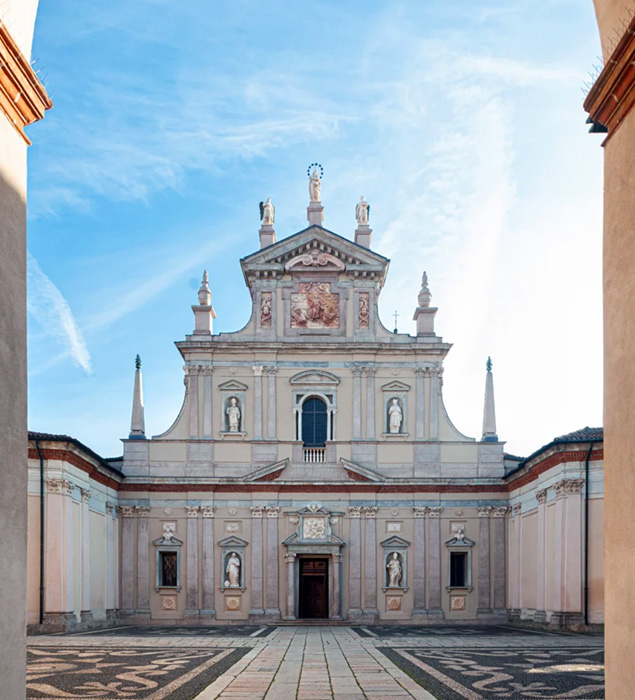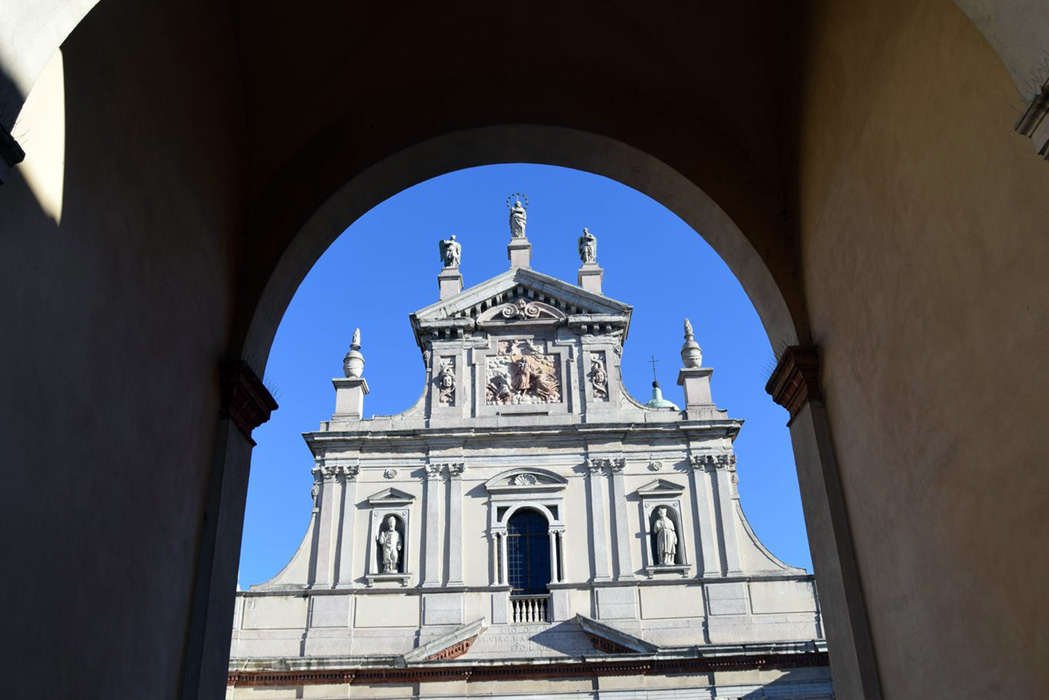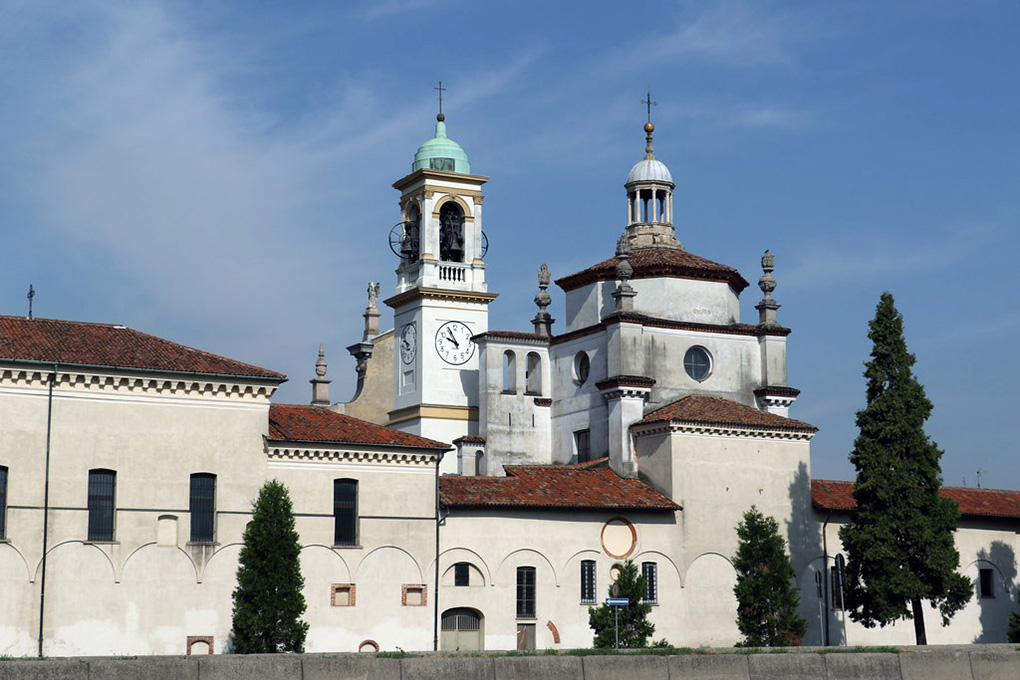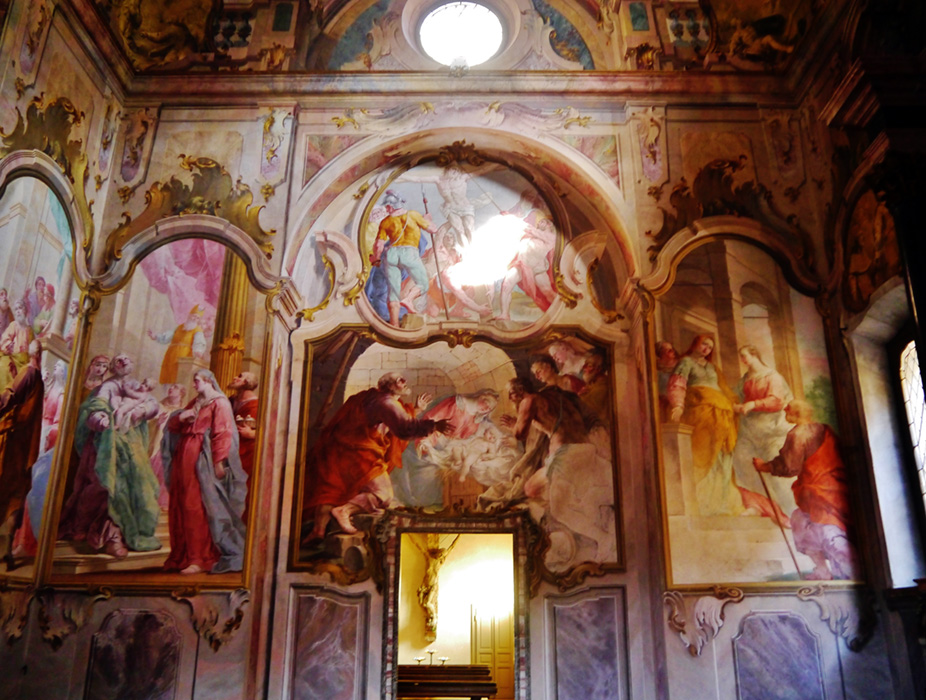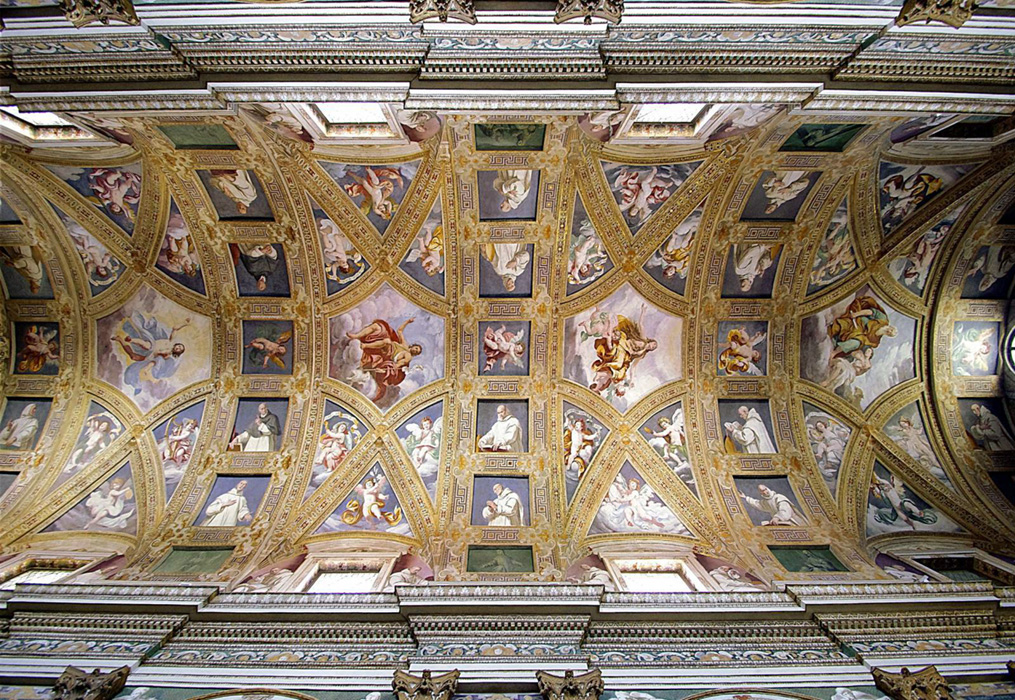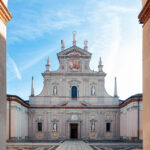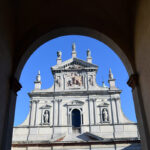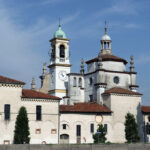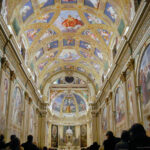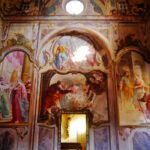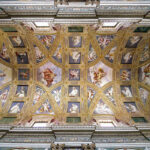Milan – The Charterhouse of Garegnano
Founded on September 19, 1349 by Giovanni Visconti, the archbishop and lord of the city, the Certosa di Garegnano had the honor of hosting Francesco Petrarca in the summer of 1357. The structure was located just four kilometers west of the city walls of Milan in the then rural village of Garegnano and was built – as explained in the deed of foundation – with the precise intent of allowing the monks who administered it to live in solitary retreat and pray even for the archbishop who, having also become a temporal lord, could not adequately attend to the ecclesiastical aspects that his role required. For this purpose, Visconti endowed it with extensive land and real estate properties, fields, vineyards and forests located in the Pieve di Trenno, whose income could ensure the support of the monks, and exempted it from all taxes and duties, as the Carthusian order was dedicated exclusively to prayer and contemplation.
The work for the construction of the monastery was largely completed by 1352, although the church was officially consecrated only in 1367. One of the priors of this Carthusian monastery was Stefano Maconi who, at the suggestion of the wife of Duke Gian Galeazzo Visconti, would be one of the first priors of the Certosa di Pavia. During the fourteenth century, Luchino Visconti made significant donations to the monastery’s construction to expand it and build new altars.
The complex, dedicated to the Madonna, was located within the Bosco della Merlata, an area frequented by bandits and thieves who, on the night of April 23, 1449, raided the Certosa and looted gold and precious items. Little is preserved of the ancient structure dating back to the fourteenth and fifteenth centuries, in particular the small cloister, or Claustro Parvo, on the right side of the church, and its quadrangular apse with the octagonal lantern.
The Certosa complex was almost completely rebuilt under the direction of the architect Vincenzo Seregni, already in charge of the Fabbrica del Duomo, starting in the 1570s. Seregni is particularly responsible for the Courtyard of Almsgiving, the Courtyard of Honor, the Great Cloister, the Cloister of the Guest House and the renovation of the church, which was once clearly divided into two areas, one for the monks and the other for the lay brothers.
In later times the Certosa hosted illustrious figures of the political and religious life of the time such as St. Bernardino of Siena, St. Charles Borromeo, and Philip IV of Spain. It remained in use until the suppression of contemplative orders in 1779, an act ordered by Giuseppe II. Used as a barracks during the Napoleonic occupation, it was restored for worship during the Austrian restoration. During the nineteenth century, Lord Byron visited the Certosa and was particularly struck by its frescoes, which he described in a letter.
With the transformation of the village of Garegnano into a parish, the partition dividing the church into two parts was removed, the stalls were removed, and in the 1930s the main altar was built. Despite being mutilated of its grand cloister (destroyed during the Napoleonic secularization), and bordered by the overpass that connects to the highways of the Lakes and Venice-Turin, it remains a monument of considerable interest.
The abbey church was reworked in late Renaissance forms starting in 1562. The façade presents modules mixed between Renaissance and Baroque styles composed of many statues, obelisks, friezes, and flames. Its construction required several decades, as the first designs that have come down to us by Seregni date back to 1570, while the presence of St. Charles among the statues, canonized in 1610, shows that it was completed later than that date. It consists of three orders divided by paired Corinthian pilasters that divide the various niches containing effigies of saints and bishops. The statuary is made of Candoglia marble, except for the altarpiece of Magdalene in pink Angera stone, and follows a precise hierarchical order in its disposition. Represented, from top to bottom, are the presence of the divine (the Virgin assumed among angels at the summit, and Magdalene transported by angels), in the second order the diocese of Milan with its patrons St. Charles and St. Ambrose, while in the first order in the center is the Flight to Egypt, then the Carthusian order with St. Bruno and Bishop Hugo, and on the sides are the busts of the founders of the Certosa, Giovanni and Luchino Visconti. The authors are not known.
The entire realization of the complex that can be admired today, both for the architectural part and for the pictorial cycles, responds to the dictates of the Counter-Reformation, according to which the task of art should be to lead the faithful to concentrate on preaching and to make them reflect on the values of faith, and on the role of saints and the church.
Inside, in the apse area, the ceiling is surmounted by an octagonal lantern, while the entire church (the work of Vincenzo Seregni) has a single nave with a barrel-vaulted ceiling and geometric stuccoes. The famous fresco decoration, consisting of two distinct pictorial cycles, the first by the Mannerist Simone Peterzano, master of the famous Caravaggio (1578) and the second by the major interpreter of Milanese Baroque of the early seventeenth century, Daniele Crespi (1629).

